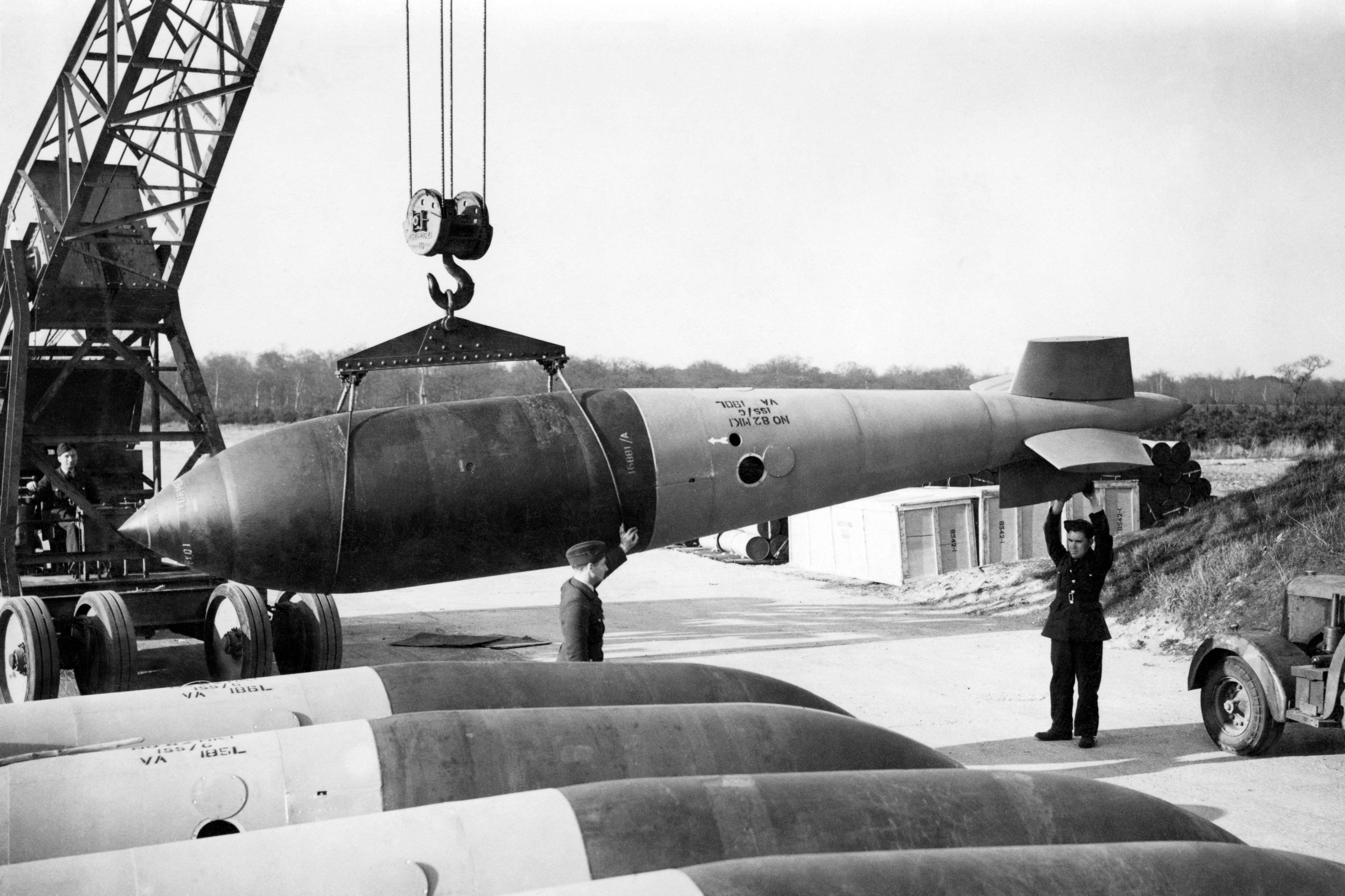BUNKER-BUSTERS: big, designed to take out hardened targets. First designed by Barnes Wallis, the 22,000lb Grand Slam proved to be just the thing to take out Hitler's U-boat pens, the Tirpitz, and various viaducts.
 |
| — the MOP — |
With the advent of various clandestine WMD projects by countries like Iran and Iraq, the USAF has developed their latest version of the Wallis weapon, now known as the MOP: Massive Ordnance Penetrator.
Critics wonder if the Iranian centrifuge sites may be too hardened, even for the MOP, but as 617 Squadron found with the Grand Slams, more damage could be done by close misses. The 12,000 lb Tallboys and the 22,000 lb Grand Slam would get through the U-boat pen roofs and cause considerable damage, but it was a Grand Slam that was some 50 yards off that killed the whole U-boat pen. Dropped from about 12,000 feet, it went about 120 feet into the earth beside the U-boat pen and exploded. The seismic pressure lifted the whole U-boat pen about 2 feet — then dropped it.
A B-2 drop would be from about 30,000 feet, so the terminal velocity could be way higher than the 617 Lancasters' Grand Slams.
 |
| — the Grand Slam — |
Maybe they might sell
a few to the Israelis? It's probably PAVE-GPS capable, so just dump one of 'em out the
ass of an IAF trash hauler at 30,000 feet and the PAVE system'll take it in. The
IAF does have Wild Weasel capability, so they could suppress any
high-altitude SAM capability and their F-15's will take care of any
aircraft the Iranians could try to operate.

5 comments:
I read. The U.S. missiles and other weapons, had infected electronic components in them, purchased from Communist China. Seems China, also hacked into other country's secret files.
Perhaps the U.S. should hang on to their grand slams for a while. Those bombs would be better, than infected missiles.
Hmm...if I remember my grade 12 physics, it wouldn't make a difference if the bomb was dropped from 30 000 or 12 000 feet as it would likely reach terminal velocity long before it hit the ground and not impact how deep it would bury itself. The device's aerodynamics, engineered ability to penetrate the given type of ground, and mass would be the determining factors there.
That's right, but as to what that terminal velocity might be, nobody's saying, likewise what altitude is optimum. FWIW, Wallis found that the Tallboys and the Grand Slam were going supersonic, and it was necessary to adjust the stabilizing fins to put a spin on the GS as it fell.
The next step up would be a kinetic strike from LEO. No warhead necessary.
There was a story going around a couple years ago about a kinetic energy weapon that could be dropped from a platform in low earth orbit. Essentially they consisted of tungsten rods roughly the size of a telephone pole covered in an ablative coating and sporting a fin set, GPS guidance package and a small retro-rocket module for de-orbit and the idea was to simply drop these things on whoever with a tremendous impact force. Apparently the idea originated in a science fiction story but the Pentagon actually gave some thought to the notion, though the notion of lofting tungsten "rods" weighing several tons apiece would get very expensive indeed. The concept was called Project Thor and nicknamed "The Rods of God".
"With the advent of various clandestine WMD projects by countries like Iran and Iraq"
Since the WMD projects in both cases have turned out to be nonexistent, hitting them may require some rather more sophisticated weaponry than bunker-busters. We're going to need some higher math--imaginary numbers could help.
Post a Comment